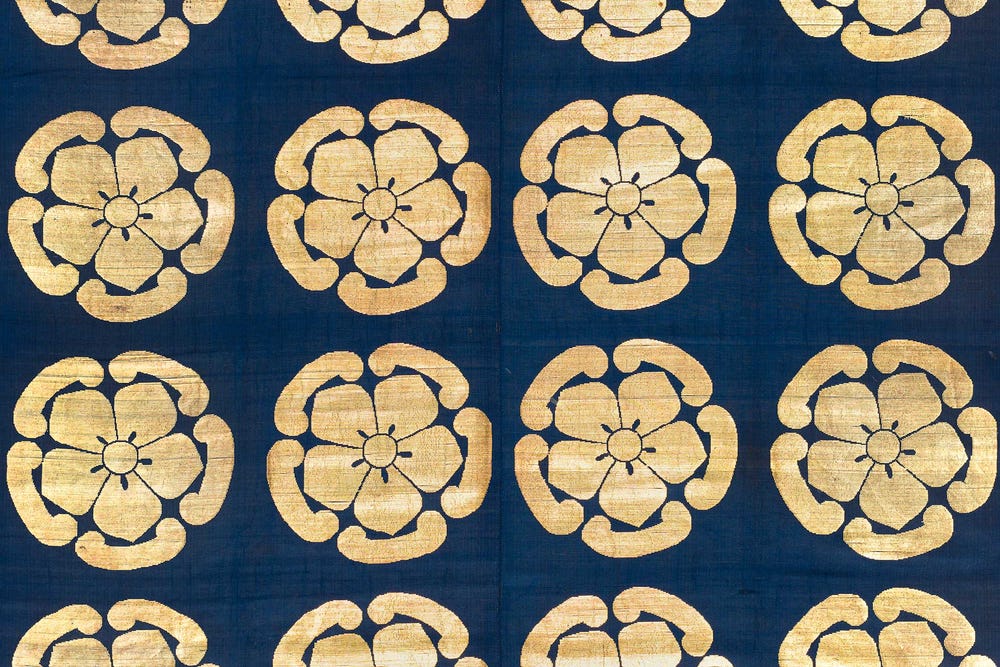Buddhist altar cloth (‘uchishiki’) (detail), early 19th century. Japan, late Edo period. Silk, gold leaf paper strips; twill lampas, supplementary-weft patterning (kinran), 118.9 x 122.7 cm (46 13/16 x 48 5/16 in.). Fine Arts Museums of San Francisco, gift of Miss Carlotta Mabury, 54688.36
On the Grid: Textiles and Minimalism
On the Grid: Textiles and Minimalism presents a broad range of textile traditions from around the world that share many of the same aesthetic choices ascribed to Minimalist works. This exploration underscores the universality of the movement’s underlying design principles, which include regular, symmetrical, or gridded arrangements; repetition of modular elements; direct use and presentation of materials; and an absence of ornamentation.
Minimalist art is based upon pre-existing systems that conceive of the artwork in advance of its actual execution. These systems, often mathematical, rely on the repetition of simple forms. Textiles by their very nature comply with these core elements, and textile artists, like the Minimal artists, predetermine the finished work through their selection and processing of materials and in the warping or preparing of the loom. On the Grid examines these processes and further explores both the preeminence of weaving in the textile design vocabulary and its influences on the design of painted and dyed pieces that also conform to Minimalism’s repetition of forms and the grid as patterning devices.
Together, more than two dozen textiles from the Museums’ permanent collection examine various aspects of the Minimalist art aesthetic that address abstraction, precision, geometry, materiality, and process. These objects reflect the core principle that there is a beauty in simplicity that is both universal and timeless.




